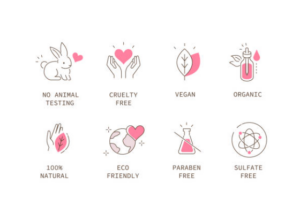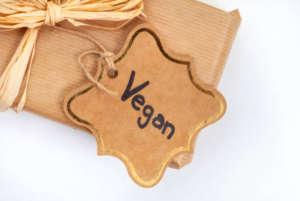Breaking Beauty Barriers

In the ever-evolving landscape of the beauty industry, a seismic shift has taken place—one that resonates with compassion, ethics, and a commitment to the well-being of our furry friends. The rise of cruelty-free beauty is more than a trend; it’s a powerful movement that reflects a growing awareness among consumers about the impact of their choices on animals and the environment. Join us as we explore the transformative journey of cruelty-free beauty, uncovering the trends and industry shifts that are reshaping the way we approach personal care.
The Evolution of Cruelty-Free Beauty
Origins and Motivations:
The roots of cruelty-free beauty can be traced back to the 1970s and ’80s when activists began raising awareness about the ethical concerns surrounding animal testing in the cosmetics industry. Motivated by a desire to end the suffering of animals subjected to painful tests, these early pioneers laid the foundation for a movement that would gain momentum over the decades.
A Shift in Consumer Consciousness:
In recent years, there has been a noticeable shift in consumer consciousness. Modern consumers are not only seeking effective and high-quality beauty products but also aligning their choices with values such as compassion, sustainability, and ethical sourcing. The demand for cruelty-free beauty has surged as consumers increasingly prioritize products that are not tested on animals.
Trends Shaping Cruelty-Free Beauty
1. Certifications and Labels:
The prominence of cruelty-free certifications, such as the Leaping Bunny and PETA’s Beauty Without Bunnies, has become a hallmark of ethical beauty products. Consumers look for these labels as assurance that the products they choose meet strict cruelty-free standards.
2. Vegan Beauty Beyond Buzzwords:
While cruelty-free and vegan are often used interchangeably, the rise of vegan beauty products specifically formulated without any animal-derived ingredients is a noteworthy trend. Brands are proudly offering a comprehensive range of vegan options, from skincare to makeup.
3. Transparent and Honest Branding:
The era of transparency has dawned upon the beauty industry. Cruelty-free brands are embracing honest communication about their sourcing, production processes, and commitment to ethical practices. Consumers appreciate this transparency and seek brands that share their values.
4. Sustainable Packaging:
The cruelty-free ethos extends beyond the product itself to include sustainable packaging. Brands are increasingly opting for eco-friendly materials, reducing plastic usage, and adopting recyclable or biodegradable packaging—a move applauded by environmentally conscious consumers.
5. Rise of Cruelty-Free Influencers:
Influencers and beauty bloggers are using their platforms to advocate for cruelty-free beauty. These influencers, often with large and dedicated followings, amplify the message of ethical beauty choices and spotlight cruelty-free brands.
Industry Shifts Towards Ethical Practices
1. Legislation Against Animal Testing:
Progressive steps are being taken at the legislative level to ban or restrict animal testing for cosmetics. Regions such as the European Union, Israel, and parts of the United States have implemented bans or restrictions, signaling a global commitment to cruelty-free practices.
2. Corporate Commitments:
Major players in the beauty industry are making public commitments to cruelty-free practices. Established brands are reevaluating their testing methods, investing in alternative testing technologies, and pledging to go cruelty-free by a certain date.
3. Educational Initiatives:
Educational initiatives aimed at raising awareness about the realities of animal testing and the benefits of cruelty-free beauty are gaining momentum. NGOs, cruelty-free organizations, and beauty industry leaders are actively involved in spreading information and fostering a more informed consumer base.
4. Advancements in Alternative Testing Methods:
The beauty industry is witnessing advancements in alternative testing methods that render traditional animal testing obsolete. Innovative techniques such as in vitro testing, 3D skin models, and artificial intelligence simulations are being embraced as effective alternatives.

Embracing Cruelty-Free Beauty in Your Routine
1. Research and Choose Wisely:
Take the time to research brands and products to ensure they align with your cruelty-free values. Look for certifications, read labels, and explore brand transparency to make informed choices.
2. Support Cruelty-Free Brands:
Support and champion brands that are committed to cruelty-free practices. By choosing ethical products, you contribute to the demand for cruelty-free options in the market.
3. Engage in Consumer Advocacy:
Advocate for cruelty-free beauty by engaging in consumer activism. Support petitions, join discussions, and use your voice to encourage brands and policymakers to prioritize ethical practices.
4. Educate Others:
Share your knowledge about cruelty-free beauty with friends, family, and followers. Encourage others to make informed choices and consider the ethical implications of their beauty purchases.
The rise of cruelty-free beauty is a testament to the transformative power of conscious consumer choices. As industry trends and shifts continue to reshape the beauty landscape, ethical practices are becoming integral to the definition of beauty itself. Embrace the beauty of compassion, choose cruelty-free products, and play a vital role in a movement that seeks to redefine beauty as a force for good—one that extends kindness not only to ourselves but to all living beings.

